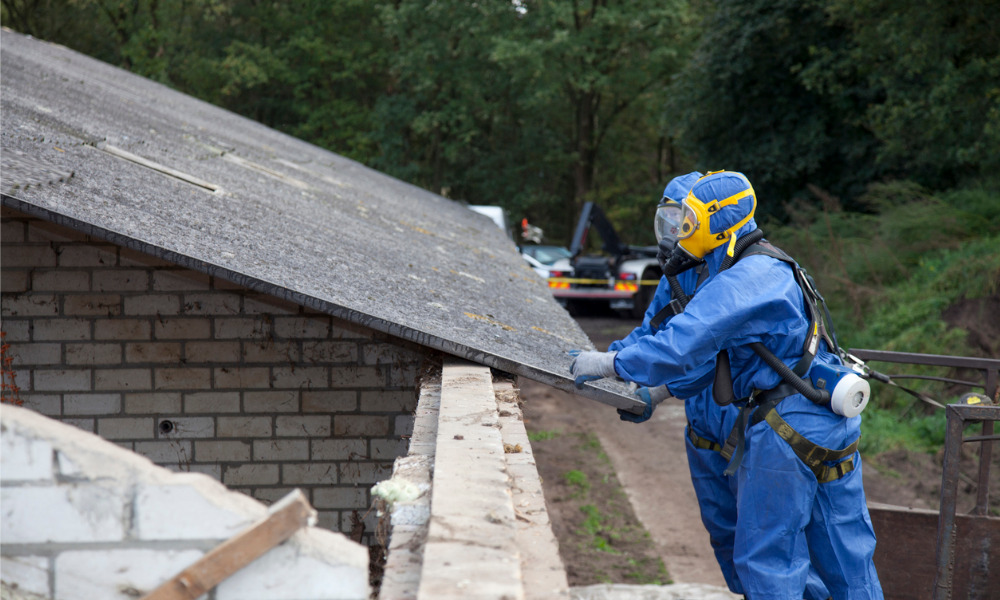Hundreds of cases of lung cancer, other illnesses linked to asbestos exposure in the workplace annually

A consensus-based standard is a crucial next step to establishing a more consistent and protective approach to asbestos management and remediation across Canada, according to the Canadian Standards Association (CSA).
The current system of management just isn’t working, according to the report based on an environmental scan of existing regulations for managing and controlling workplace exposure to asbestos in Canada and in several international jurisdictions, a literature review and a series of 31 key informant interviews.
Currently, legal responsibility and oversight of asbestos management is divided between federal, provincial, territorial, and municipal authorities and this creates compliance challenges for those working in several jurisdictions and enforcement issues for regulators.
There are 37 occupational health and safety laws, 18 environmental laws, two pieces of public health legislation and 14 other laws governing the management of asbestos in the country, said the CSA.
On top of that, there are conflicting definitions of asbestos and asbestos-containing materials (ACM), and this creates challenges in the assessment of asbestos, the selection of controls and the management and safe disposal of asbestos waste. Currently, there is variation across Canada with regard to a minimum threshold of asbestos required for a material to be considered an ACM.
Another point of concern is the differences in training, said CSA. Stakeholders believe that significant differences in training for asbestos-exposed workers and supervisors, and competency requirements for those doing asbestos remediation work, “widespread presence of ‘fly-by-night' contractors whose workers are often inadequately trained”.
There is also a lack of public awareness about the presence of asbestos in the built environment because of poor documentation, said CSA.
“No Canadian jurisdiction requires asbestos inventories and risk assessments to be performed in residential buildings, a risk to workers who may be exposed to ACM while doing renovations,” it said.
Asbestos numbers
These gaps in the rules have posed a threat to thousands and thousands of workers, according to CSA, citing previous reports.
CAREX Canada estimates 152,000 Canadians are exposed to asbestos in their workplaces each year. And even with the federal government’s asbestos ban in 2018, exemptions allow for continued use in military, nuclear and chlor-alkali industries and in road infrastructure built before the ban took effect.
“Asbestos is still found in many buildings, often undocumented. As it degrades or is disturbed during renovations it can pose a health threat to anyone living and working in these settings,” said CSA.
Another report cited by the association – released in 2017 – found that some 55,000 Ontario workers are exposed to asbestos causing some 630 lung cancers, 140 mesotheliomas, 15 laryngeal cancers and less than five ovarian cancers annually.
Other research estimated the cost to Canadians of newly diagnosed cases of mesothelioma and lung cancer in 2011 due to work-related asbestos exposures to be $2.35 billion.
Recently, WorkSafeBC charged three employers in British Columbia for violations relating to asbestos-containing materials. Three other employers were convicted earlier this year for similar violations.
Establishing the standard
To create a consensus-based standard, training and competency are the areas needing standardization the most, according to CSA.
“The importance of education and training cannot be overstated – particularly for those in occupations with a higher probability of coming into contact with ACM during their work,” it said.
Building owners must also deliver on their specific obligations to prepare and maintain an ongoing asbestos management plan, according to CSA. This must include a record of ACM locations (to be updated every 12 months or when new information becomes available) which must be shared with employees and others, along with specific control measures including worker training.
Meanwhile, employers needing to address asbestos-related hazards can take advantage of the Workers Health & Safety Centre (WHSC)’s asbestos awareness training program and resource line fact sheet.





